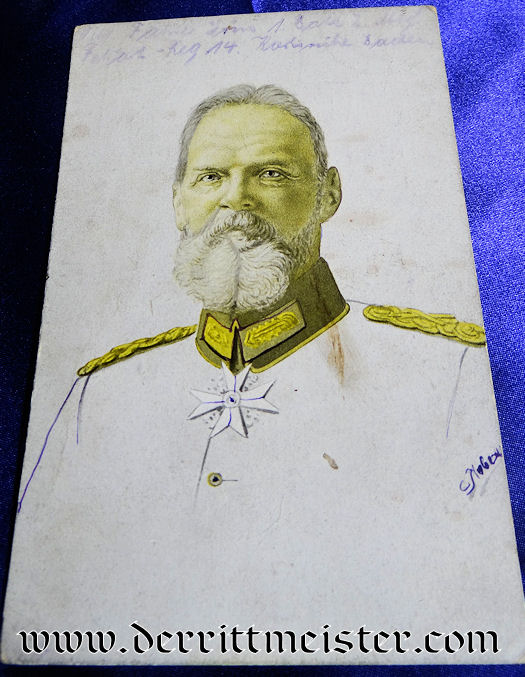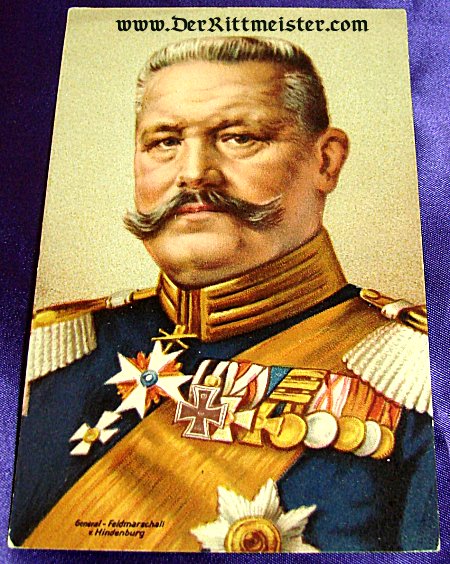Description
During WW I, three German royals were truly able commanders. They worked their way to their positions not so much by their royal births, but by their performances. Those three men were Kronprinz Rupprecht of Bavaria, Herzog Albrecht of Württemberg, and Prinz Leopold of Bavaria. These men achieved the rank of generalfeldmarschall and commanded vast troop numbers in Armeegruppen or Herresgruppen. (Army Groups were assemblages of multiple armies (generally three or more) that reported to these men. They were a huge responsibility. [Remember, Kronprinz Wilhelm was only given command of ONE army during the war(!)]. These three men were excellent commanders. Along with von Mackensen and von Hindenburg, they were among WW I Germany’s best.
The postcard we are offering today is of Generalfeldmarschall Prinz Leopold (1846-1930). We do not hear a great deal about him as he spent the war’s bulk fighting on the Eastern Front. It is interesting to note that during the 1870/71 Franco-Prussian War Leopold was awarded the 1870 Iron Crosses 1st and 2nd Class (first as a young hauptmann, then a major).
He progressed through the Bavarian Army and was promoted to generalfeldmarschall in 1905. He retired in 1913, but was brought back to active service at the age of sixty-eight with WW I’s onset. This made him one of the German Army’s older senior commanders.
In 1915 he was given command of the IX. Armee, replacing von Mackensen. Next, he was promoted to lead Herresgruppe Prinz Leopold, which consisted of German and Austrian troops on the Eastern Front. Finally in 1916, when von Hindenburg was promoted to command the entire German Army, Prinz Leopold was given Hindenburg’s old post. From that point forward, he was “Oberbefehlshaber Ost,” the Supreme Commander of all Central Power troops fighting on the Eastern Front. He held this post until the end of fighting on the Eastern Front. He also signed the Treaty of Brest-Litovsk, which concluded the hostilities on the Eastern Front.
He, von Hindenburg, and von Mackensen were perhaps WW I’s three most-decorated generals. They received virtually every German decoration, including the Orden Pour le Mérite, Orden Pour le Mérite with Oak Leaves, and the 1914 Grand Cross of the Iron Cross. (Only five of the latter were awarded. Kaiser Wilhelm II and General Erich Ludendorff, von Hindenburg’s deputy, were the other two recipients).
The color postcard depicts Prinz Leopold. A message is written on the obverse. On the reverse we find that the postcard was mailed by a soldier to a loved one back home. He was a member of an artillery regiment. The postcard is dated 1918.




